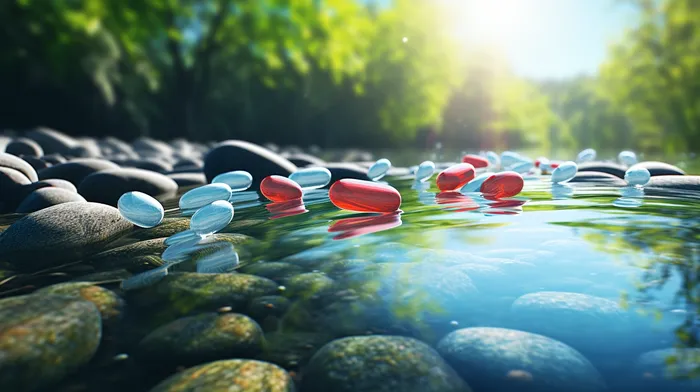Ah, springtime – flowers are blooming, the sun is shining, and allergy season is in full swing. Many of us rely on antihistamines to keep sneezing, itching, and congestion at bay, but while these medications may be making our lives more bearable, they could be wreaking havoc on our waterways and the creatures that inhabit them.
The Risks of Antihistamines in our Water
Research conducted at the Cary Institute of Ecosystem Studies in Millbrook, N.Y., has found that a common antihistamine ingredient, diphenhydramine, can have serious consequences for aquatic life when it infiltrates rivers and streams. The study discovered that the presence of diphenhydramine can reduce photosynthesis in water by a staggering 99 percent, severely impairing algal production and microbial respiration. Additionally, diphenhydramine was found to alter the bacterial species within biofilms, increasing the presence of bacteria known to break down toxic compounds and decreasing the number of those that can digest plant and algae-derived substances.
These changes in biofilm composition could have severe knock-on effects on entire ecosystems, warns researcher Emma Rosi-Marshall, who suggests that, “We need additional studies looking at the concentrations that cause ecosystem disruption, and how they react with other stressors, such as excess nutrients.”
The Role of Biofilms in Aquatic Ecosystems
Before we can understand the implications of this research, it’s essential to grasp the importance of biofilms to the health of our waterways. Although they may appear as simple slippery coatings on rocks in streams, biofilms are, in fact, intricate communities made up of algae, fungi, and bacteria all working together. Biofilms help maintain water quality by recycling nutrients and organic matter, and they provide a crucial food source for invertebrates, which in turn feed larger animals, like fish.
As the study at Cary has shown, the presence of antihistamines like diphenhydramine can severely disrupt the delicate balance of these biofilm communities and alter the entire ecology of a stream. This may lead to declining numbers of certain species, changes in water quality, and ultimately, significant long-term damage to the habitats of countless plants and animals that rely on the health of our waterways for their survival.
Possible Solutions and Alternatives
One way to mitigate the risks posed by pharmaceuticals like antihistamines entering our waterways is through better wastewater treatment systems. Upgrading current infrastructure to effectively remove these harmful substances would require significant investment but could make a massive difference in the health of aquatic environments. The Environmental Protection Agency (EPA) provides guidelines and resources for handling and disposing of pharmaceuticals, but ultimately, the responsibility to implement improved water treatment systems falls on local governments and utilities.
In the meantime, individuals can take steps to reduce the amount of pharmaceutical waste that ends up in our water sources. Proper disposal of unused or expired medications is crucial – avoid flushing them down the toilet or pouring them down the sink. Instead, take advantage of community drug takeback programs or follow FDA guidelines on how to safely dispose of medicines at home.
Additionally, if you suffer from seasonal allergies, consider trying alternative or natural treatments that don’t contain diphenhydramine. Options include nasal irrigation or saline sprays, acupuncture, butterbur supplements, or quercetin, a natural antioxidant found in many fruits and vegetables. Always consult with your healthcare provider before starting any new treatment for allergies.
Final Thoughts
The discovery of the impact of antihistamines on aquatic ecosystems is a sobering reminder that the choices we make to manage our personal health can have consequences far beyond our own bodies. Our actions, no matter how small, can have a ripple effect on the world around us – in this case, quite literally. By being aware of the environmental risks posed by pharmaceuticals like diphenhydramine, we can make informed decisions to protect our waterways and the creatures that call them home.



